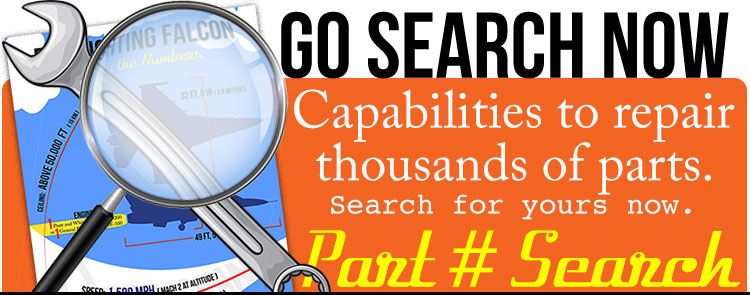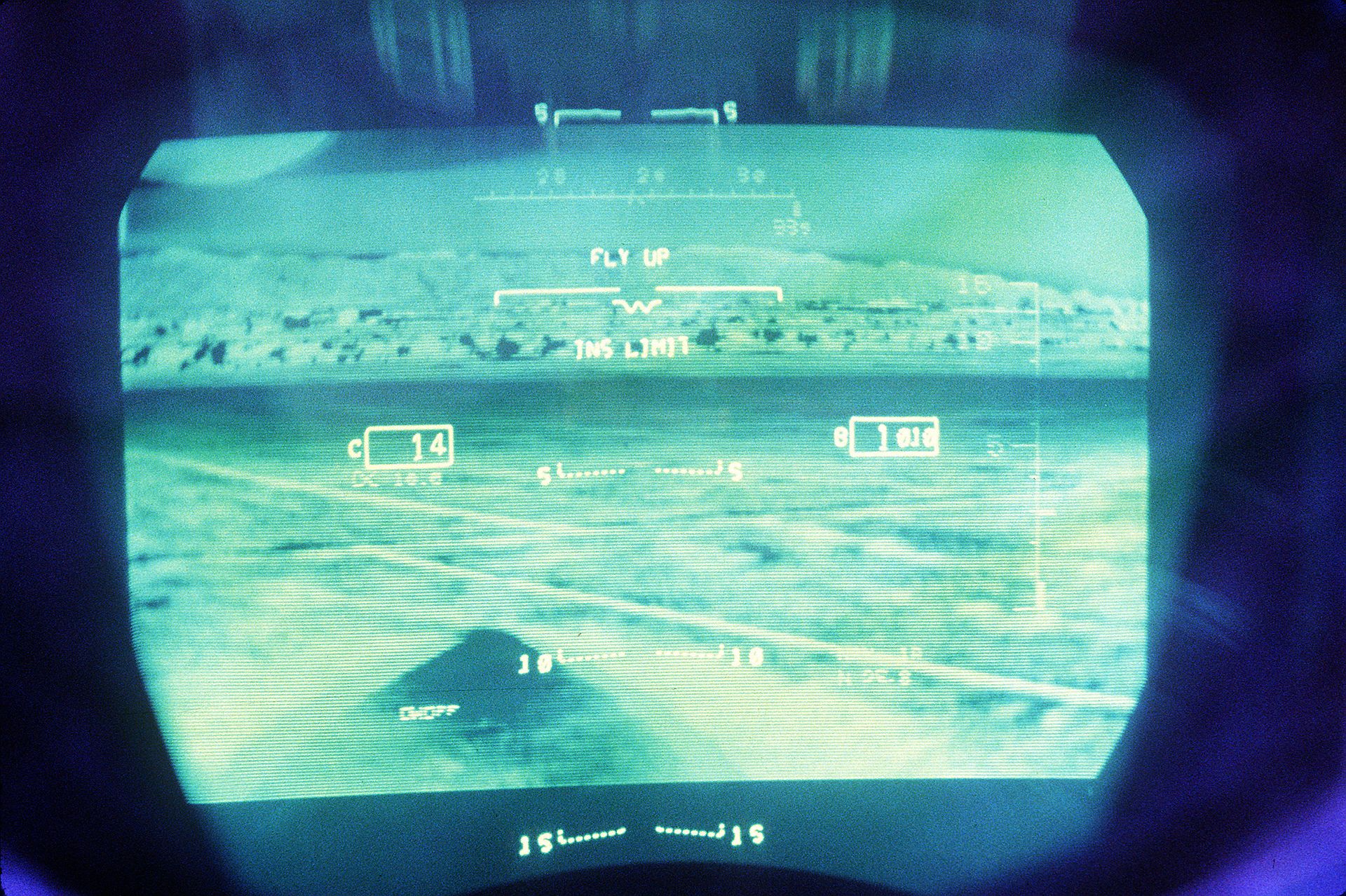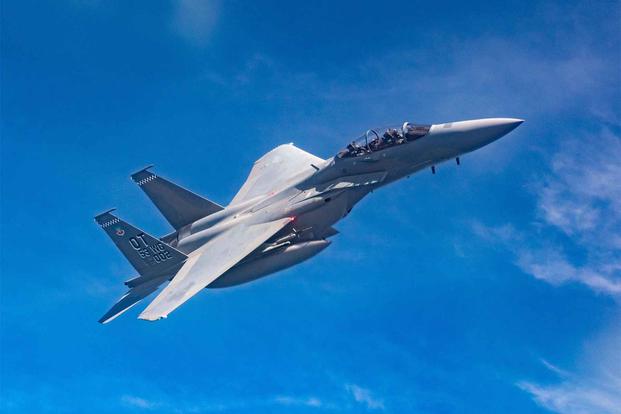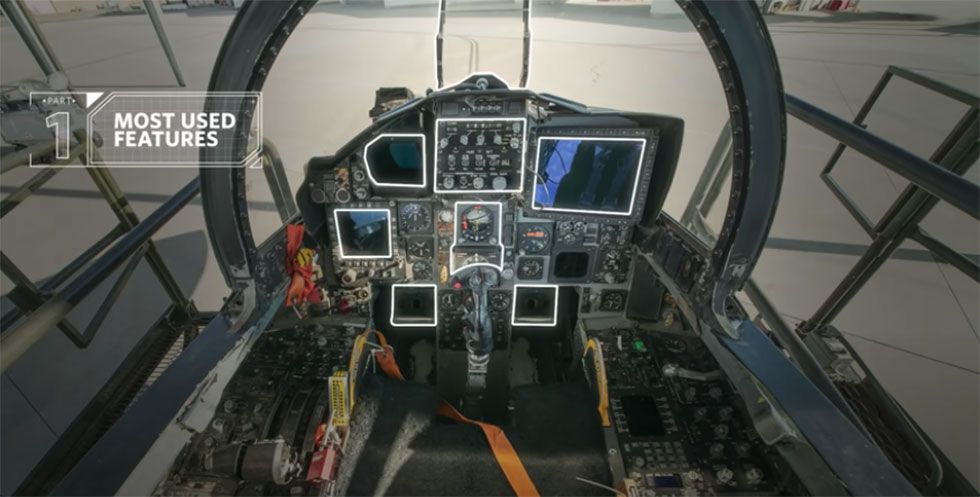It’s a partly cloudy day over the east coast and a pilot of a Cessna 400 has taken a friend up for a quick sightseeing trip along the coast of Virginia. Following a short excursion over the Chesapeake Bay and then up the Potomac, the pilot begins to have radio problems and cannot communicate with nearby controllers. As he troubleshoots his issue, his aircraft accidentally wanders into restricted airspace near Washington D.C. Focused on the radio, he does not see the laser warning system that notifies pilots that they need to turn back, and soon he is side-by-side with a F-15 fighter jet that scrambled to intercept the small aircraft. The pilot suddenly becomes aware of how far he has strayed and turns back.
Though they were designed to intercept much faster and deadlier aircraft, military fighter jets like the F-15 Eagle and F-16 Falcon are common interceptors for keeping the American skies and designated restricted flight zones free of unauthorized aircraft.
Though the Cessna was identified as a slow moving, non-threatening target, the F-15 turned the private plane back by with the potential threat of being shot down. The McDonnell Douglas F-15 Eagle was designed to dominate the air space it patrols and win in air-to-air combat. It has been one of the most successful fighters to do so, with over 100 victories and no losses from aerial combat – the majority of those scored by the Israel Air Force.
Also read: F-15 Strike Eagle Fighter Jets Wingtip to Wingtip
As an air-intercept aircraft, the F-15 is highly effective as well. Beyond pursuing just smaller, slower flying private aircraft like the Cessna above, the F-15 can chase down the fastest fighters and bombers in the world. When a perceived threat is identified, the Eagle can be scrambled and reach top speeds of 1650 mph to counter any threat posed by an unidentified aircraft. Powered by 2 Pratt and Whitney F-100-PW-100 afterburning turbofans, the Eagle can achieve Mach 2.5+. It has a range of 3,450 miles with conformal fuel tanks and external tanks, so it is able to travel long distances very quickly.
Its combat radius is 1,222 miles. When it gets to the target, if it has to maneuver in a dogfight, the F-15 has a high thrust-to-weight ratio of 1:1. This power enables the pilot to turn the F-15 tightly without losing airspeed. With the thrust output of the dual engines more than the combat weight of the aircraft, the Strike Eagle can climb to 30,000 feet in about 60 seconds and can accelerate vertically.
When it chases its target around the sky and gains the advantage, the pilot can choose to engage the enemy with the 20 MM M61A1 Vulcan 6-barreled Gatling Cannon (940 rounds) or by firing an AIM-7 Sparrow, AIM-9 Sidewinder, or AIM-120 AMRAAM air-to-air missile. With the powerful engines, maneuverability, and deadly missiles, the sky truly belongs to the Eagle.
 Duotech maintains electronics, avionics and communications components of the F-15 Eagle. For instance, the Integrated Communications Control Panel (ICCP) C-10796/ARA shown here. This control system allows the pilot to operate between two receiver/transmitters (R/T). R/T 1 houses the electronics and memory for the control of an ARC-164 UHF Radio. R/T 2 would consist of a different ARC-164 UHF or an ARC-186 VHF AM/FM radio. Other systems Duotech repairs of the F-15 include the ALQ-135 Advanced Electronic Countermeasures, and the APN-232 Combined Altitude Radar Altimeter (CARA).
Duotech maintains electronics, avionics and communications components of the F-15 Eagle. For instance, the Integrated Communications Control Panel (ICCP) C-10796/ARA shown here. This control system allows the pilot to operate between two receiver/transmitters (R/T). R/T 1 houses the electronics and memory for the control of an ARC-164 UHF Radio. R/T 2 would consist of a different ARC-164 UHF or an ARC-186 VHF AM/FM radio. Other systems Duotech repairs of the F-15 include the ALQ-135 Advanced Electronic Countermeasures, and the APN-232 Combined Altitude Radar Altimeter (CARA).
Even with tight funding, systems like the C-10796/ARA and legacy receiver/transmitter radios like the AN/ARC-164 must be maintained to ensure mission critical components are ready to keep those fighters in the air. Duotech supports existing legacy and obsolete systems in aircraft like the F-15, F-16, and F-5 enabling operators to avoid scraping repairable equipment, while delivering under budget and meeting critical deadlines. Contact Duotech today about supporting your electronic and electromechanical systems with a full range of equipment repair services.
Communications Control Panel (ICCP) C-10796/ARA
P/N: 5055101-8
NSN: 5895-01-329-6324







